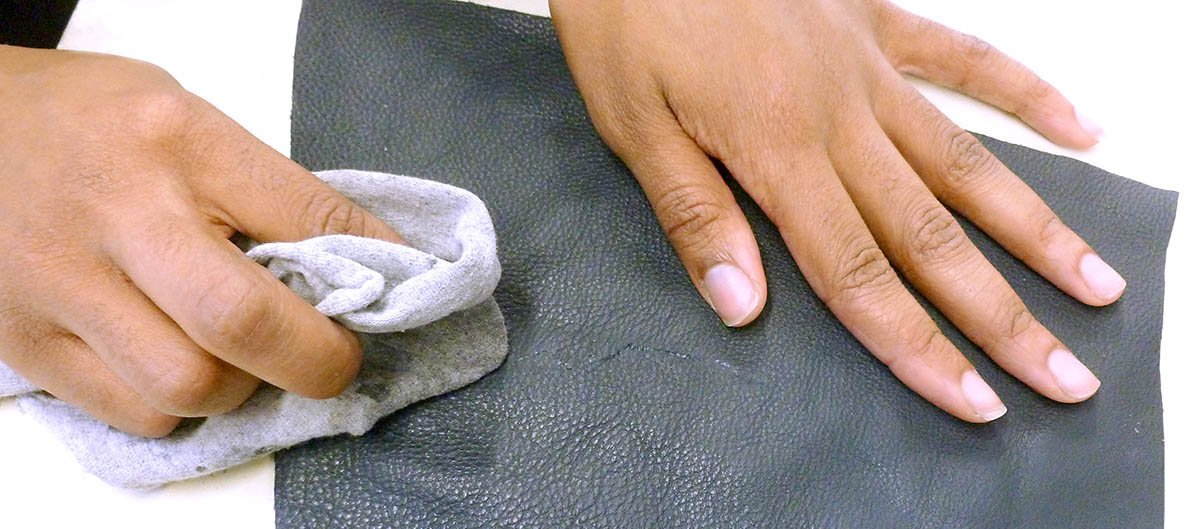Leather, a durable and versatile material, adds a touch of elegance to our lives with its timeless appeal. However, exposure to sunlight, dirt, and moisture can often lead to discoloration, fading its original luster. Fortunately, restoring discolored leather is entirely possible with the right techniques and a little patience. This comprehensive guide will take you through a step-by-step process to effectively fix discolored leather and restore its vibrant beauty.

Image: www.pinterest.com
Recognizing the Causes of Discoloration
Before embarking on the restoration journey, it’s crucial to understand the underlying causes of leather discoloration. These can include:
- Sun exposure: UV rays present in sunlight break down the dye molecules, leading to fading and discoloration.
- Moisture: Excess moisture or spills can cause staining and watermarks if not treated promptly.
- Dirt and grime: Accumulation of dirt and grime can dull the leather’s surface, affecting its appearance.
- Chemical spills: Harsh chemicals can react with the leather’s finish, resulting in discoloration.
- Natural aging: Over time, leather tends to develop a natural patina due to the oxidation process.
Step-by-Step Restoration Process
Now that we’ve identified the causes of discoloration, let’s dive into the step-by-step restoration process:
1. Cleaning the Leather
Begin by thoroughly cleaning the leather to remove any dirt and grime. Use a soft cloth or sponge dampened with a mild soap solution (mix a few drops of dish soap in a cup of water). Gently wipe down the leather surface, avoiding excessive rubbing. Allow it to dry completely before proceeding to the next step.

Image: www.ramleathercare.com
2. Removing Water Stains
If your leather item has been exposed to water, act quickly to minimize staining. Use a clean, dry cloth to absorb as much moisture as possible. For more persistent stains, apply a mixture of equal parts white vinegar and water using a soft cloth. Gently dab the stain and allow it to sit for a few minutes. Wipe the area clean with a damp cloth and let it dry.
3. Repairing Chemical Damage
In case of chemical spills, the best course of action is to test a small, hidden area with rubbing alcohol before attempting any further treatment. If the rubbing alcohol does not affect the leather’s color or finish, you can use a cotton swab dipped in rubbing alcohol to gently remove the chemical. Rinse the area with a damp cloth and let it dry completely.
4. Rejuvenating Faded Leather
To restore faded or discolored leather, you’ll need a leather conditioner or cleaning cream specifically designed for leather restoration. Apply a small amount of the conditioner to a soft cloth and gently rub it into the leather surface. Allow it to absorb for a few minutes, then buff with a clean cloth to enhance its sheen.
5. Touching Up Scratches
For minor scratches, use leather repair cream or wax. Apply a small amount to the scratched area and use your finger to rub it in circular motions. Allow the wax to dry and buff off any excess. For deeper scratches, you may need to use leather dye or a professional leather repair kit.
6. Protecting the Leather
Once you’ve restored your leather item, it’s essential to protect it from future discoloration. Use a leather protector or sealant to provide a barrier against moisture, sunlight, and other environmental factors. Periodically clean the leather with a soft cloth to remove any dirt or grime.
How To Fix Discolored Leather
Maintaining Leather’s Luster
By following these steps, you can effectively fix discolored leather and restore its captivating beauty. Here are a few additional tips for maintaining the leather’s luster:
- Keep leather items out of direct sunlight when not in use.
- Store leather in a cool, dry place to prevent it from drying out.
- Clean leather regularly to prevent dirt and grime accumulation.
- Avoid using harsh chemicals or detergents on leather.
- If you notice any signs of discoloration, act promptly to minimize further damage.
By incorporating these simple care tips into your routine, you can ensure that your leather items retain their pristine appearance for years to come. Remember, leather is a natural material that develops character with age, telling the story of its timeless journey.